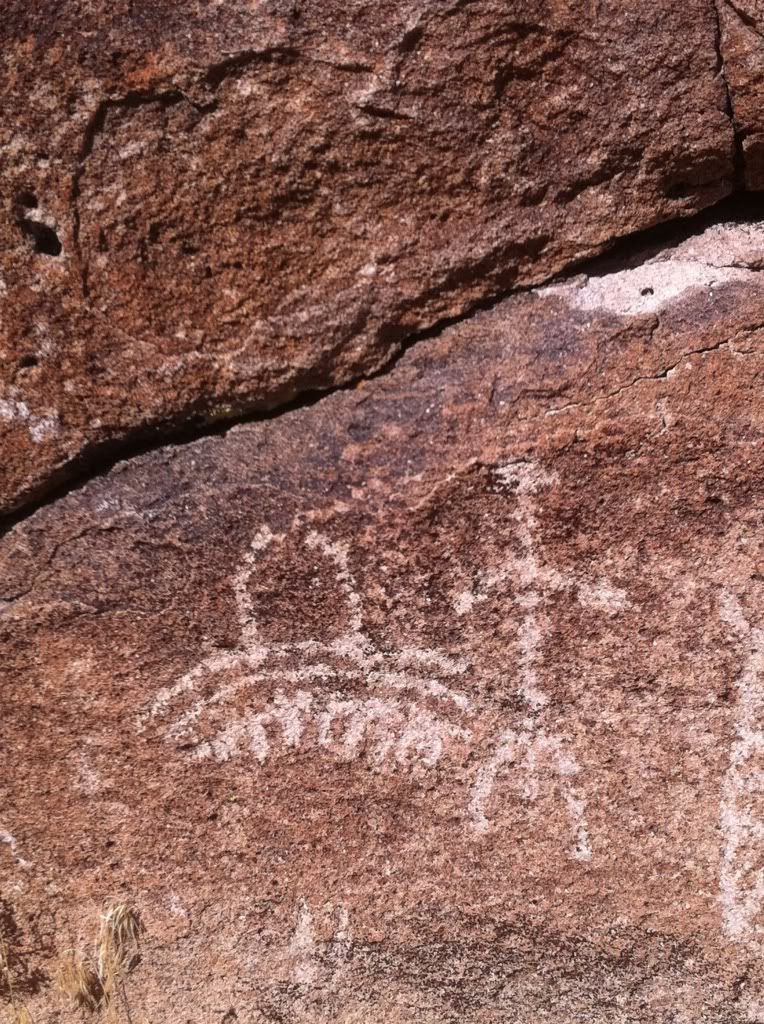Even the experts aren't really sure what to make of primitive rock art. Was it like road signs pointing to good hunting areas? A tribe's written history? Expressions of joy or reverence?
Probably all of the above. To me it's simply humbling and thought provoking.
I took these pictures at the Mt. Irish Petroglyph Site in Nevada. It's a remote site near Hiko where rock art by the Pahranagats, a clan of Paiute Indians, is quite numerous and impressive.
The Pahranagats lived in the area for 10,000 to 12,000 years. Some of the rock art may date back this far, but it is difficult to date accurately. But we can safely say that some of these petroglyphs are thousands of years old.
They were hunter-gatherers who followed big game and native plants. They were experts at survival and made the most of a challenging environment. At some point, they adopted a more settled existence, growing row crops and exploiting small, local game such as birds, insects and rodents.
They could not adapt to the arrival of European settlers in the 1860s, who pretty much exterminated the indians to get at the gold and silver veins underground.
That's why the rock art resonates. These are the Pahranagats' own pictures of what mattered in their lives, or reminders of important events.
Will our culture be around in 10,000 years? If not, what symbols will speak for us?
 |
| Bighorn sheep. Once abundant and vital to the Pahranagat, the species is now found in just a few remote pockets of Nevada. |
Probably all of the above. To me it's simply humbling and thought provoking.
I took these pictures at the Mt. Irish Petroglyph Site in Nevada. It's a remote site near Hiko where rock art by the Pahranagats, a clan of Paiute Indians, is quite numerous and impressive.
The Pahranagats lived in the area for 10,000 to 12,000 years. Some of the rock art may date back this far, but it is difficult to date accurately. But we can safely say that some of these petroglyphs are thousands of years old.
They were hunter-gatherers who followed big game and native plants. They were experts at survival and made the most of a challenging environment. At some point, they adopted a more settled existence, growing row crops and exploiting small, local game such as birds, insects and rodents.
 |
| Pahranagat tale of a UFO encounter? Some say it could be a sombrero. I think maybe a dwelling of some sort. |
That's why the rock art resonates. These are the Pahranagats' own pictures of what mattered in their lives, or reminders of important events.
Will our culture be around in 10,000 years? If not, what symbols will speak for us?
No comments:
Post a Comment